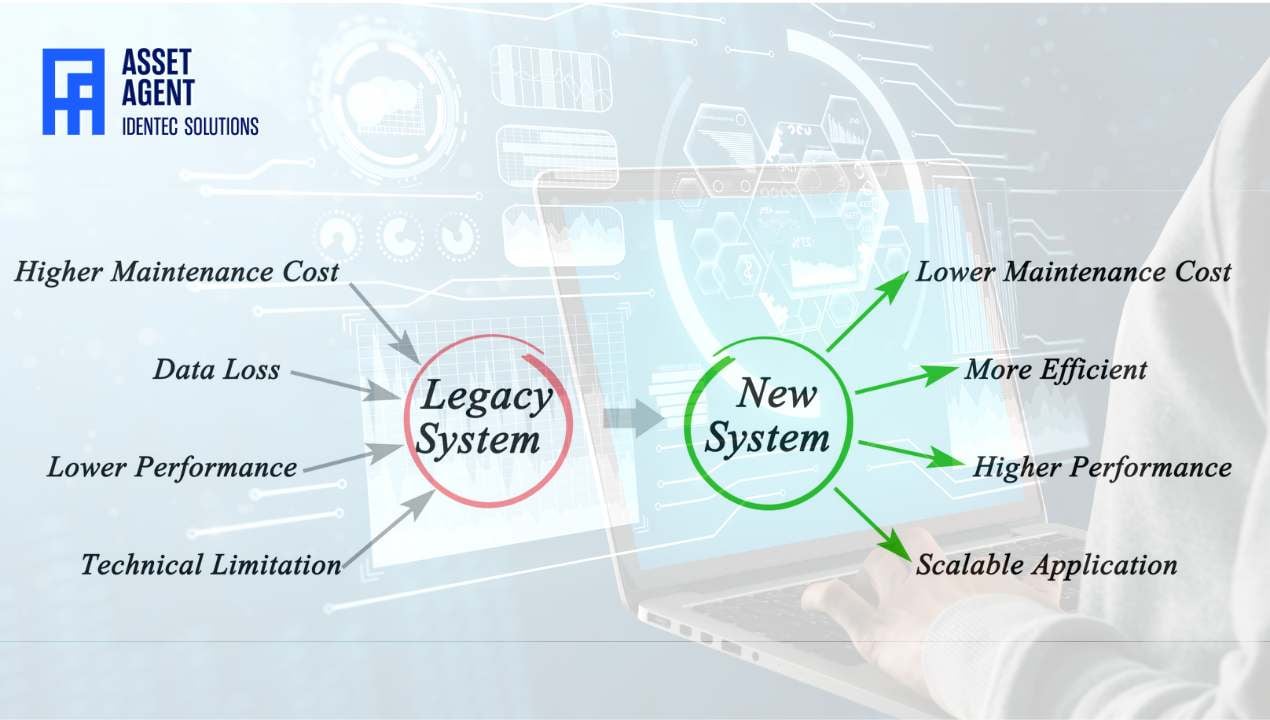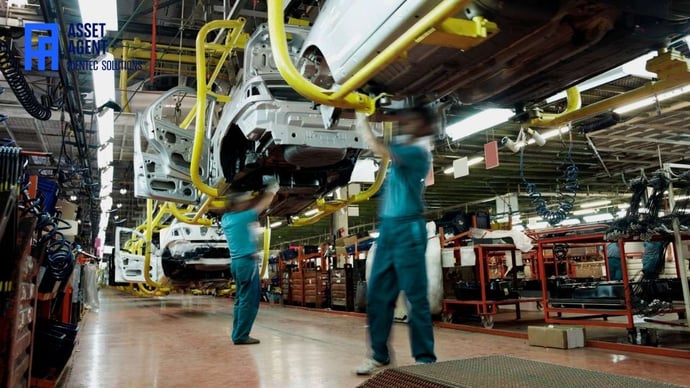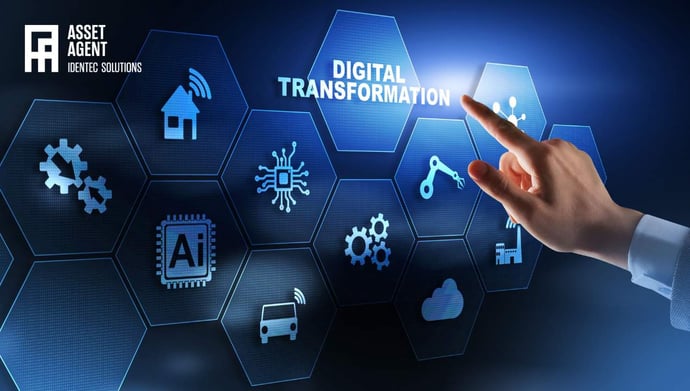The Legacy process as a barrier for an Industry 4.0 upgrade
| Written by Mark Buzinkay
Thanks to advances in technology, businesses today can take their digital transformation to the next level by tackling the age-old challenge of legacy processes. By moving away from outdated legacy systems and opting for an Industry 4.0 upgrade, organizations can accelerate their development and become better equipped to face the challenges of a fast-changing digital world.
In this post, we will explore the concept of legacy systems, how they can hinder business growth, and how organizations can overcome legacy processes to switch to an Industry 4.0 upgrade. We'll also discuss some of the main benefits of such an upgrade.
So, let's dive in and find out how to overcome the legacy process barrier and take your business to the next level.

No video selected
Select a video type in the sidebar.
The pace of development sets digital and analogue businesses apart. To keep up with the former, you must eliminate anything that impedes speed - or what we call "Legacy". Old-fashioned practices can entangle your operation, leaving you vulnerable to industry disruptors. Therefore, the first step in going digital is identifying all the legacies that plague your company.
What exactly do we mean by 'legacy"?
What is a Legacy System?
A legacy system is an outdated software and hardware system that was once widely used but has since been replaced by newer, more advanced and reliable technologies. These systems have been around for decades, with some of the oldest versions dating back to the 1950s. Over time, the use of these systems has decreased as newer technology has replaced them.
The main issue with legacy systems is their out-of-date architecture. Outdated systems are not designed to integrate with new technologies, often making them incompatible with industry 4.0 upgrades. A legacy system can be a barrier to an Industry 4.0 upgrade, as it requires a complete overhaul of the existing system. This often requires significant infrastructure changes, making it a costly and time-consuming task.
Replacing a legacy process takes considerable time and resources to complete, as it requires deep analysis of the existing systems and a comprehensive roadmap for the replacement process. Furthermore, the cost of a legacy system upgrade can be high, as it involves significant infrastructure changes.
Hardware Legacy
For a business to transition to Industry 4.0, it must first evaluate its existing hardware. Legacy processes typically refer to long-standing hardware foundations and structures. This kind of hardware has been in place for a long time, and it is important to examine its compatibility with the new technologies and processes of Industry 4.0.
It's important to note that not all aged items are considered legacies. Take scissors for instance, they have been in use for centuries and are still widely used today because their basic principle has not changed. There simply isn't a newer system that is significantly better (at least not yet).
One of the major issues that companies face when transitioning to Industry 4.0 is the inability to utilize older hardware resources due to their lack of compatibility. For example, Industry 4.0 processes require a high degree of integration between hardware components to maximize the system's efficiency and effectiveness. Older hardware may be incompatible with the current Industry 4.0 process, and this can require costly and time-consuming upgrades.
Aside from compatibility issues, businesses must also consider the scalability and longevity of their hardware. Items with an average age of 10 years are often not considered outdated, and only hardware with a lifespan of 20-50 years requires careful consideration. Before introducing long-lasting hardware, it's crucial to ensure that it won't become obsolete upon rollout.
An Industry 4.0 upgrade requires hardware and software that can keep up with high-volume data processing, and older hardware may be unable to support the system. To ensure successful implementation, businesses must consider investing in newer hardware resources. This can be costly, but it is necessary for businesses to ensure that their hardware meets the requirements of Industry 4.0.
IT Legacy
It's evident that a significant proportion of businesses continue to rely on outdated technologies. For instance, a 2022 study found that 88% of organizations worldwide are hindered by legacy technologies. (3) Additionally, over two-thirds of businesses still use mainframe or legacy applications for core operations. (4). These statistics highlight the widespread prevalence of legacy systems and the ongoing efforts by many organizations to modernize their IT infrastructures.
Often, legacy systems are so entrenched in a company’s operations that it can be difficult to upgrade to newer, more efficient systems. This can be due to the cost of replacing existing hardware and software, the time needed to train staff on the new system, and the risk of disrupting regular operations during the upgrade process. Additionally, legacy code written in older programming languages can be difficult to maintain and update, and organizations may be reluctant to upgrade or change the software.
Organizations may also be hesitant to upgrade due to the cost of developing an interface between their existing system and the newer, more modern systems. This can be especially true when connecting IT systems from the same company that are running on different generations of technology. To develop such an interface, the organization must first identify the problems and capabilities of its current system. This can be a lengthy and expensive process that many organizations may choose to avoid.
Unfortunately, many businesses have become ensnared in a web of ageing IT systems. When these systems are intricately linked with others, the decision to update becomes fraught with risk and complexity, leading to procrastination. However, the consequences of inaction are dire. Operating systems, databases, firewalls, and hardware will all eventually become outdated, unsupportable, and obsolete. Only regular maintenance can prevent this outcome, but it's only worth the investment if the complexity costs of running an old system can be eliminated.
When you check your IT systems and processes, you may find systems older than 10 years, or features added later to the original design, deeply integrated with other applications, extremely complex updating process and an affected UX, then you should act immediately. Why? Because the system is causing significant damage to your business.
Legacy Processes in Industry 4.0
Upgrading to Industry 4.0 involves both integrating current processes and replacing outdated ones. For example, businesses may need to implement new technologies like IoT, Artificial Intelligence and Big Data. These technologies may require changes to existing processes, introducing new digital workflows and processes.
However, these changes can be difficult as many companies have heavily invested in their existing processes, which have been running for years. Moreover, some processes have been established in such a way that they are difficult to update. This can make adopting new Industry 4.0 technologies and processes difficult, as they could clash with existing structures.
Therefore, transitioning to Industry 4.0 requires extensive research and planning. Companies must identify the processes they would like to keep and those that need to be replaced. When devising an Industry 4.0 upgrade plan, companies must also consider factors such as cost, compatibility, and scalability.
Legacy processes can also cause a business to lag behind in industry standards and competition. Companies not taking advantage of the latest advances in digital technology may find themselves at a severe disadvantage. They will not benefit from the advantages that Industry 4.0 can provide, such as higher levels of efficiency and improved customer service.
By implementing Industry 4.0, businesses can increase efficiency and productivity, streamline processes and reduce operational costs. Moreover, Industry 4.0 smart factory solutions can provide access to real-time data and analytics for deeper insights into the operations of a business. The implementation of an Industry 4.0 upgrade, however, can be hindered by the presence of a legacy process. As a result, businesses may hesitate to upgrade to Industry 4.0, as there is an initial cost associated with the adoption of new technologies.
Read on to learn more about the challenges of digital transformation for manufacturing.
What are the Challenges of Removing Legacy systems?
Making the transition to Industry 4.0 is not without its challenges (see brownfield operations). One of the most significant aspects to consider is the legacy process. Legacy processes are an organization's practices and procedures that have been in place for a long period of time and may be difficult to change. These processes are often entrenched in an organization’s culture and can be difficult to challenge.
This means that transitioning to an Industry 4.0 model can be challenging, as legacy processes may need to be completely overhauled or integrated into the new approach. This can be costly and time-consuming. In addition, it may require the organization to invest in new technology or training and to re-think existing procedures. This can be difficult to do quickly and may require the organization to compromise between retaining legacy processes and moving to Industry 4.0 (read more about the future factory).
Strategies for Overcoming the Legacy Process
In order to upgrade to Industry 4.0, businesses must first overcome the legacy process. Many firms rely on outdated software, hardware, and data models, which can be a major roadblock to successful Industry 4.0 integrations. To overcome this obstacle, businesses should consider the following strategies:
Rebuilding from scratch
While creating a completely new software tool in parallel with an outdated IT system may be tempting, it's important to consider the potential risks. While this approach allows you to focus on new features and eliminate technological debt, any new software must be deployed within 12 months of specification at the latest. If this timeline is not met, the new software could become outdated before it's even deployed.
This is especially true for large, complex legacy IT systems, which may not be easily replaced within a year. It's important to carefully weigh the benefits and risks before embarking on a full rebuild.
Find pieces that you can take out and replace one by one
This approach makes you somehow independent of replacing a complete legacy system at once and within the 12-month window. The basic idea is to create smaller pieces of the legacy system and replace them individually.
One logical way to do it is to follow the substructure within the legacy system's code. Following these "lines", it is often possible to clean up the inter-tangled parts and obtain clear communication of the separated units through defined interfaces. Once you have established them, replacing every independent piece of code with new technology that communicates through these new interfaces is possible.
Sometimes, you have already defined a new system which offers an interface to the old legacy system. Then, you can reduce the complexity of your legacy system by replacing some of the old with the new. This way, the new software will gain ownership of the replaced functionality and reduce the complexity of the legacy system.
Learn more about RTLS tags and factory efficiency.
FAQs
What is a legacy system?
A legacy system is a hardware, computer system or application that is outdated or obsolete, typically replaced by more modern technology.
Why are legacy systems still in use?
Legacy systems are still in use because they may be the only way to access certain data or applications. Additionally, they may have been heavily customized to fit the needs of a business and it may be more cost effective to continue using the system than to replace it.
What are the challenges associated with legacy systems?
The main challenge associated with legacy systems is that they can be difficult to maintain and update due to their outdated technology. Additionally, they may be prone to security issues or lack features that newer systems have.
How can I modernize a legacy system?
Modernizing a legacy system can be done by either transitioning existing data and applications to newer technology, or by replacing the system altogether.
Takeaway
In conclusion, legacy processes can be seen as a significant barrier to Industry 4.0 upgrade. This is because legacy processes often require significant re-engineering or even replacement to keep up with the new technology and processes that Industry 4.0 requires. Companies must have an in-depth understanding of the existing legacy processes and learn how to manage the risks associated with it in order to upgrade to Industry 4.0 successfully. Companies also need to consider strategies such as internal upskilling, process integration, legacy software, and automation as potential solutions to overcoming legacy processes. With the right measures, companies can take advantage of the benefits that Industry 4.0 offers, from increased productivity and efficiency to cost savings and improved customer service. Ultimately, the legacy process can be seen as an increase in opportunities for those companies taking the necessary steps to upgrade.
Delve deeper into one of our core topics: Real Time Location Systems
Glossary
User Experience (UX) refers to a user's overall interaction with a product, system, or service, focusing on ease of use, accessibility, and satisfaction. UX design aims to enhance usability, efficiency, and emotional connection through research, prototyping, and testing. Key elements include usability, visual design, and user psychology. Good UX fosters engagement, loyalty, and business success. (5)
Sources:
(1) Robert C. Seacord, Daniel Plakosh, Grace A. Lewis (2003): Modernizing Legacy Systems: Software Technologies, Engineering Processes, and Business Practices. Addison-Wesley Professional
(2) K. Bennett, "Legacy systems: coping with success," in IEEE Software, vol. 12, no. 1, pp. 19-23, Jan. 1995, doi: 10.1109/52.363157.
(3) https://exadel.com/news/reasons-to-modernize-legacy-systems/
(4) https://www.forbes.com/councils/forbestechcouncil/2022/09/01/three-ways-to-get-the-most-value-from-legacy-technology/
(5) Norman, D. A. (2013). The Design of Everyday Things (Revised & Expanded Edition). Basic Books.
Note: This article was updated on the 12th of February 2025

Author
Mark Buzinkay, Head of Marketing
Mark Buzinkay holds a PhD in Virtual Anthropology, a Master in Business Administration (Telecommunications Mgmt), a Master of Science in Information Management and a Master of Arts in History, Sociology and Philosophy. Mark spent most of his professional career developing and creating business ideas - from a marketing, organisational and process point of view. He is fascinated by the digital transformation of industries, especially manufacturing and logistics. Mark writes mainly about Industry 4.0, maritime logistics, process and change management, innovations onshore and offshore, and the digital transformation in general.





